Description
Scarlet Nantes Carrot (a.k.a. Early Coreless, Scarlet Nantes Coreless)
250 Seeds per pack
Days to Maturity: 65–75 days
Sun Requirements: Full sun; tolerates partial shade.
Botanical Name: Daucus carota
Best Seller!
Scarlet Nantes is a time-tested heirloom carrot that’s been grown since the mid-1800s. It was first listed in the U.S. in 1870 by B.K. Bliss & Sons, but its roots go back to the Nantes region of France, where growers selected the best traits from an older type called ‘Half Long Stump Rooted.’ Over time, it became the dependable, sweet, blunt-tipped carrot gardeners love today.
The roots grow about 6–7″ long and around 2″ wide at the top, with a smooth shape that tapers gently. They’re bright reddish-orange, nearly coreless, and have a crisp texture with a sweet, mild flavor. This makes them perfect for snacking, slicing, juicing, or roasting. Strong tops make harvesting easy.
Scarlet Nantes stands up well to common issues. It can still be affected by certain diseases, but practicing crop rotation and keeping your garden tidy helps ensure healthy, vigorous growth in most settings.
These carrots are rich in nutrients—especially beta-carotene (vitamin A), plus vitamin C, vitamin K, potassium, fiber, and antioxidants. Whether you’re planting in spring or fall, Scarlet Nantes is a reliable, great-tasting carrot with a rich history and excellent performance!
Planting Instructions for Scarlet Nantes Carrot Seeds
When to Plant:
Direct sow Scarlet Nantes carrot seeds outdoors 2 to 3 weeks before your last expected spring frost, once the soil reaches at least 50°F (10°C). Scarlet Nantes grows best in cooler temperatures and can be planted again in late summer—about 10 weeks before your first fall frost—for a sweeter, fall-harvested crop. For staggered harvests, continue sowing small batches every 3 to 4 weeks during the main season. Avoid transplanting, as disturbed roots can grow misshapen.
Where to Plant:
Choose a site in full sun with light, loose, stone-free soil. Scarlet Nantes thrives in well-drained, fertile soil and benefits from a deeply prepared seedbed. Avoid beds that were recently amended with fresh manure, which can cause forking. A soil pH of 6.0 to 6.8 is ideal. Before planting, loosen the soil deeply and mix in well-aged compost.
How to Sow:
Sow Scarlet Nantes seeds ¼” deep and 1″ apart in rows spaced 12 to 18 inches apart. The seeds are tiny—try mixing them with sand to distribute them more evenly. Cover with ⅛” to ¼” of sifted compost or fine soil, not coarse dirt. Press down gently and keep the surface moist. For best results, cover rows with burlap or shade cloth until the seeds sprout. Germination may take 7 to 21 days depending on soil temperature and moisture.
Watering:
Scarlet Nantes seeds need consistent moisture to germinate properly. Use a fine mist spray or a micro-spray system to avoid displacing seeds. Once established, water about 1 inch per week. When carrots begin to size up, increase watering to 2 inches per week to encourage root development. Avoid inconsistent watering, which can cause roots to split. Always water at the soil level—avoid overhead sprinklers that may promote disease.
Fertilization:
Before sowing, mix in 2–3 inches of compost or well-rotted organic matter. Avoid nitrogen-rich fertilizers, which encourage leafy growth at the expense of root development. Once tops are about 4 inches tall, side-dress with a balanced organic fertilizer or compost tea. Avoid adding extra phosphorus unless your soil is deficient, as it may lead to split or misshapen roots.
Mulching:
Once seedlings are 1–2 inches tall, add a layer of mulch to retain moisture, suppress weeds, and keep soil temperatures consistent. Use straw, shredded leaves, or dried grass clippings. Avoid using fresh clippings, which release too much nitrogen too quickly and can lead to forked roots. Let clippings dry for a few days before applying in a thin layer. Mulch also helps keep carrot shoulders from turning green from sun exposure. In early spring, black plastic mulch can warm the soil and speed up germination.
Thinning:
Thin Scarlet Nantes seedlings when they are 1–2 inches tall to about 2–3 inches apart. Use scissors to snip the tops at soil level rather than pulling, which can disturb nearby roots. Proper spacing allows Scarlet Nantes to grow straight and uniform.
Pest & Disease Management:
Scarlet Nantes is vulnerable to the same pests as other carrots, including carrot rust fly, weevils, nematodes, and leafhoppers. To prevent damage, use floating row covers from planting until harvest, and avoid disturbing the foliage when weeding, as its scent can attract pests. Rotate crops yearly, and don’t plant carrots in the same area more than once every three years. Keep the bed free of weeds and debris. For nematodes, avoid planting in infected soil and consider interplanting with French marigolds.
Common Diseases:
This variety may be affected by powdery mildew, leaf blights, and root canker. Ensure good air flow by thinning and avoiding overcrowding. Water early in the day and avoid wetting the foliage. Remove any infected plants immediately to prevent spread.
Harvesting:
Scarlet Nantes is typically ready to harvest 65 to 75 days after planting. Begin pulling when roots are about 6 to 7 inches long and around 2 inches wide at the top. These blunt-tipped carrots have smooth skin and a crisp, sweet texture. Loosen soil with a fork before pulling to avoid breakage. Trim tops to ½–1 inch after harvest.
Storage:
Store freshly harvested Scarlet Nantes carrots in the refrigerator for up to two weeks. For longer storage, leave them in the ground under mulch and harvest as needed, provided your soil doesn’t freeze. Alternatively, store in damp sand or sawdust in a root cellar. Scarlet Nantes also preserves well by freezing, canning, or dehydrating.
Freezing:
Wash, peel, and cut Scarlet Nantes carrots into slices or small pieces. Blanch in boiling water for 2 minutes (or 5 minutes for whole carrots), then transfer immediately to an ice bath. Once cooled, drain thoroughly and spread in a single layer on a parchment-lined baking sheet. Freeze until firm, then pack into freezer bags or containers. Label and store in the freezer for up to 12 months.
Canning:
Use a pressure canner. Wash, peel, and cut Scarlet Nantes into slices or small chunks. Raw pack or hot pack (simmer 5 minutes). Fill clean jars with carrots and boiling water, leaving 1 inch headspace. Optional: add 1 tsp canning salt per quart. Remove air bubbles, wipe rims, and seal. Process in a pressure canner based on your altitude. Cool completely and check seals after 24 hours.
Dehydrating:
Wash, trim, and peel if desired. Slice or dice carrots, blanch for 2 minutes, and cool in ice water. Drain and arrange in a single layer on dehydrator trays. Dry at 125°F (52°C) for 4–12 hours, until brittle or leathery. Let cool fully before storing in airtight containers in a cool, dark, dry place.
Seed Saving:
Scarlet Nantes is a biennial variety. Leave healthy carrots in the ground or replant them to overwinter. In year two, they’ll flower and produce seed. Isolate by at least ½ mile from other carrot types or use row covers to prevent cross-pollination. Collect and store dried seed in a cool, dry place. Properly saved Scarlet Nantes seeds remain viable for 2–4 years. We offer pre-labeled seed-saving envelopes to help you stay organized.
FAQ:
How long does it take Scarlet Nantes carrots to mature?
Scarlet Nantes carrots typically mature in 65 to 75 days from sowing, depending on conditions. They’re ready to harvest when roots reach about 6–7″ long and 2″ wide at the top.
When and how should I plant Scarlet Nantes carrot seeds?
Sow seeds 2–3 weeks before your last spring frost or about 10 weeks before your first fall frost. Plant ¼″ deep, 1″ apart in rows 12–18″ apart, in loose, well-drained soil. Avoid transplanting, as it can lead to misshapen roots.
Can Scarlet Nantes carrots be grown in containers?
While they prefer deep garden beds, Scarlet Nantes can be grown in containers that are at least 12″ deep with light, stone-free soil. Choose a wide container for adequate spacing and consistent moisture.
What do Scarlet Nantes carrots taste like?
They have a crisp texture and sweet, mild flavor. Their nearly coreless, smooth roots make them excellent for snacking, juicing, roasting, and fresh eating.
Are Scarlet Nantes carrots disease-resistant?
They’re fairly resilient, but still susceptible to common issues like leaf blight and root canker. Good airflow, crop rotation, and avoiding overhead watering help keep them healthy.
How should I water Scarlet Nantes carrots for best growth?
Keep the soil consistently moist, especially during germination. Once established, provide 1″ of water per week, increasing to 2″ when roots begin sizing up. Avoid inconsistent watering to prevent splitting.
How do I store Scarlet Nantes carrots after harvest?
Store in the refrigerator for up to two weeks, or keep in damp sand or sawdust in a cool root cellar. They can also be preserved by freezing, canning, or dehydrating.
Can I save seeds from Scarlet Nantes carrots?
Yes, but they’re biennial. Let healthy carrots overwinter, and they’ll produce seed the second year. Isolate from other daucus carota varieties to keep the seed pure.
What pests affect Scarlet Nantes carrots, and how can I prevent them?
Common pests include carrot rust flies, nematodes, and leafhoppers. Use floating row covers, rotate crops, avoid fresh manure, and interplant with marigolds to deter pests naturally.

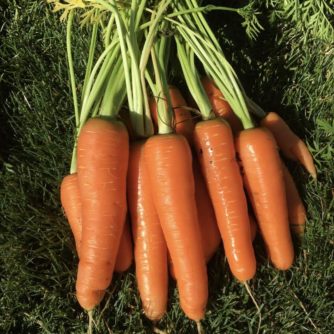
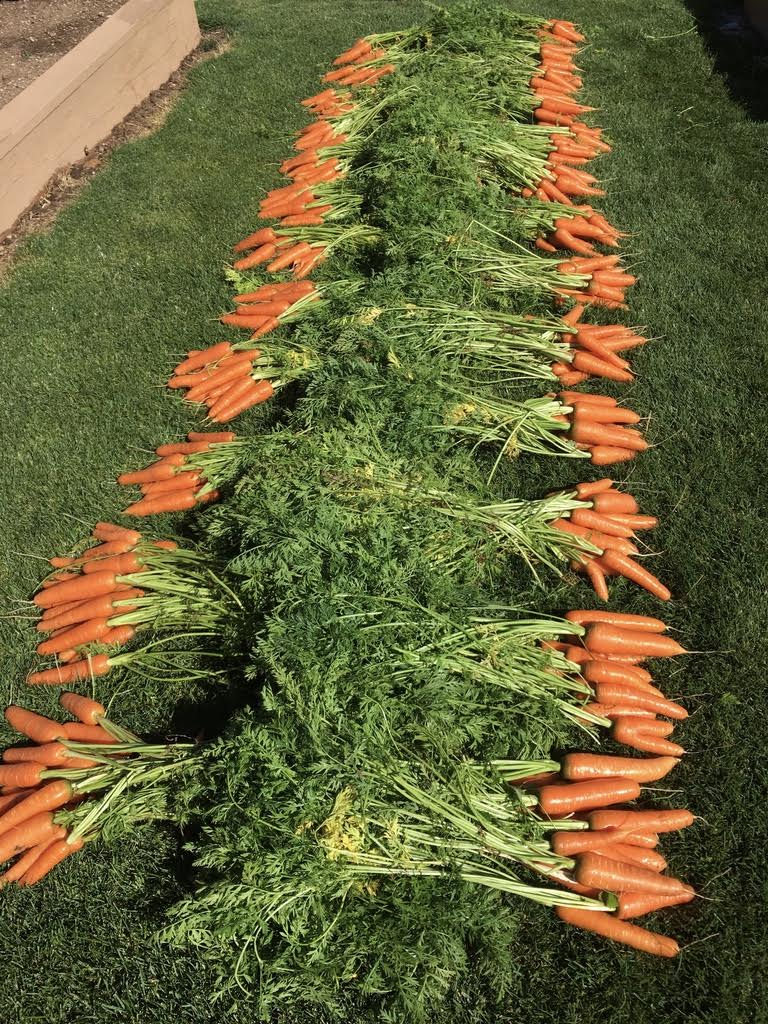









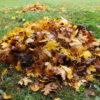
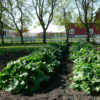

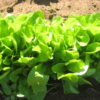
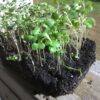


Dani T. (verified owner) –
One of my favorite seeds.
Tamara B. (verified owner) –
Great crop last year!
Carl S. (verified owner) –
Great company!
Highly recommended
Mike H. (verified owner) –
Very satisfied with these seeds, good germination. Highly recommend !
Amber (verified owner) –
Perfect for shallow containers. Excellent packaging!
Debby K. (verified owner) –
Robert D. (verified owner) –
Patricia Stone (verified owner) –
5 star!
Anonymous (verified owner) –
Coming up nicely even before they were supposed to.
karen bergerson (verified owner) –
5 star!
Ken (verified owner) –
Barbara S. (verified owner) –
Rita L. Weisjohn (verified owner) –
We’ve grown these for several years now and are always pleased to harvest tons of carrots. We’ve tried other varieties but these have such wonderful smooth skins which make them so easy to clean, easy to peel and they are beautiful in color. It seems the hotter/dryer it is, the sweeter they get but even in a normal year they are sweeter than the others; very good flavor.
Katcha Sanderson –
Tasty and easy to grow. Smaller size = easier canning. grew side by side with Chantenay Red Core and this one produced more and tasted better.